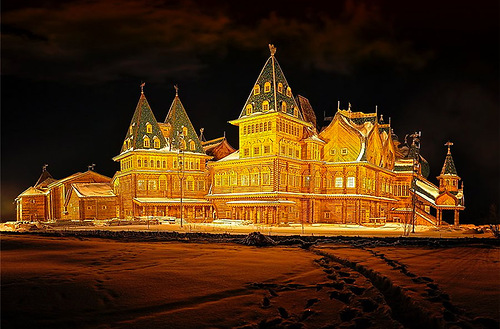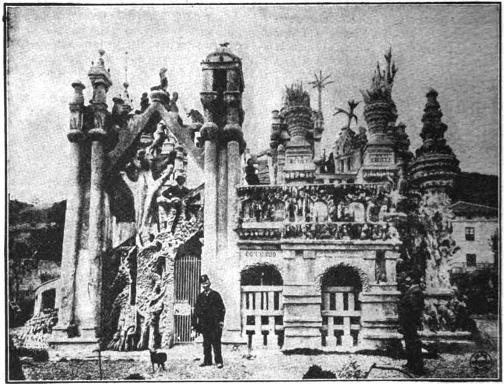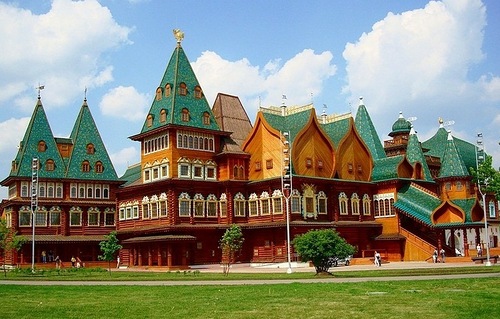Mountain Palace of Sigiriya
Mountain Palace of Sigiriya
The Lion Rock is an ancient destroyed mountain fortress with the remnants of the palace, situated in central Matale district in Sri Lanka. The fortress, surrounded by the remains of an extensive network of gardens, pools and other structures is an impressive site. Besides, this is a popular tourist destination in Sri Lanka. In addition, Sigiriya is famous for its ancient images – paintings. Built during the reign of King Kasap I (477 – 495 AD), the fortress is one of the seven world heritage sites in Sri Lanka.
According to archaeologists, the palace was built in the late 4th century, initiated by the monarch by the name of Parricide, Kasap. He fled to these remote places, fearing revenge of his brother – the heir to the throne.
People inhabited Sigiriya during the prehistoric times and used it as a shelter mountain monastery, starting around the 5th century BC, with caves and monasteries. And later King Kasap built the garden and palace. After the death of Kasap place again became a monastery until the 14th century, however, abandoned after that. Meanwhile, Siguiri Senarat Paranavitan archaeologist deciphered the inscriptions in his famous work, published in Oxford. He also wrote a popular book, “The history of Sigiriya”.
Rock of Sigiriya – a powerful form of magma and long extinct volcano collapsing. A rock rises high above the surrounding plain, visible for many miles in all directions. Based on the steep embankment rock rises abruptly above the flat plain surrounding it. Height of cliff is 370 meters above sea level. In fact, the Mountain on which people decided to build a beautiful palace, is an extinct volcano. However, the researchers believe that even before the construction of the palace, people settled here (mostly monks and hermits).
Meanwhile, the earliest evidence of human presence in Sigiriya – found in a mountain in the eastern part of the cliff. These findings indicate that people inhabited the area nearly five thousand years ago during the Mesolithic. During the third century BC, there were rock-shelter caves organized by Buddhist monks. These buildings were built between the third century BC and first century AD. During the reign of King Kasap from 477 to 495 AD, Sigiriya developed into a complex city, which had become an impregnable fortress. Most of complex buildings on the mountain heights, including protective structures, palaces and gardens, refer to the period of Kasap. The complex of buildings on the mountain is impressive thanks to a combination of symmetrical and asymmetrical elements. In general, they are all in harmony with each other.
In 495 AD, Sigiriya once again turned into a Buddhist monastery – the monks were here before the fourteenth century. After this, no mention of Sigiriya appeared until the seventeenth century, when this area became the Kingdom of Kandy.
The archaeological work here began in the 1890s. HCP Bell was the first archaeologist who has done extensive research of the area around Sigiriya. Large-scale studies began in 1982, initiated by the Government of Sri Lanka. Of course, today the palace resemble ruins, but even these remnants of past grandeur impress. In the western part of the palace complex was a park with several pools. Special mechanisms delivered water to the mountain top. Interestingly, they still remain intact until the present day.
The ancient castle remained at the top of the hill so far, as part of the fortress. Despite its age, some of the decisions of builders are still astonishingly inventive. In particular, storage tanks still keep water and ditches and walls surrounding the palace are still elegant and beautiful. Gardens of Mountain Palace of Sigiriya – the central part of the area because it is one of the most beautiful gardens in the world. The gardens divided into three separate areas: water gardens, gardens of stone, and gardens – terraces.
Part of the famous Sigiriya – mirror wall. Originally, this polished wall reflected so well that the king could see himself as he passed it. The secret is in the wall, made of special porcelain china, and partially covered with verses scribbled by visitors to Lion Rock. The oldest of the Sigiriya poems date from the 8th century. Many visitors wrote on the wall about love, and various events, however the officials later forbade painting on the walls.
The entrance to the main part of the ancient city, that is, the huge lion’s paws, probably intended only for members of the royal dynasty. However, the original entrance was a lion’s head, that is, to get into the palace, it was necessary to go through the open mouth! Unfortunately, time has not saved a unique gateway.
Mirror corridor led into the royal chambers. Once it was one of the most luxurious rooms of the palace. There were hundreds of murals, most of which depicted half-naked women – the ruler’s concubine. It is worth noting that several frescoes survived to the present day.
The ancient temple on the cliff top was a giant art gallery, murals cover most of the western slope of the cliff, 140 meters in length and 40 meters high. Now many of the Sigiriya frescoes lost forever, but the style of this painting is unique. Sigiriya – the most valuable asset of Sri Lanka and the government in every way protects it.
Of course, the paint faded on them, but the images are still visible. Researchers believe that the creation of these murals based on the natural colors of beeswax and egg whites. This, according to scientists, has given a life to murals.
With the elevation called “lion rock” a magnificent view of the surrounding neighborhood. Below, in full view, lay the rice fields, forests and small lakes. Once on this hill was the royal swimming pool along with a huge throne.
For a long time Mountain Palace of Sigiriya was considered destroyed and lost somewhere in the woods, but in the middle of the XIX century, the legendary palace was discovered. There was a lot of restoration work carried out, maintained to this day.
Mountain Palace of Sigiriya was listed as UNESCO World Heritage Site, and is very popular among tourists. Every year thousands of travelers come here to witness the ruins of an ancient palace. Indeed, the history of Sigiriya is shrouded in many legends. In the fifth century AD, Kasap (477-495), the eldest son of King Datusen (459-477), was to inherit the throne, but his father decided in favor of his youngest son Mogallana (his mother was a concubine Kasap). Kasap kindled hatred for his father and put him in prison, and in 477 was involved in his killing. Mogallana was horrified by the terrible acts of his elder brother, and fled to South India. Fearing revenge Kasap decided to build a capital in a remote place. And he chose the Sigiriya rock, 370 m in height.
The king and his architects had cleared the area around the rocks and built a magnificent city, surrounded by gardens and swimming pools with fonts. Built the most magnificent staircase in the world: a step cut between the legs, neck and jaw of immense size lion. Leo – the emblem of the state and the form of intimidation. Part of the cliff, above the head of a lion, was painted with the images of Kasap and his father Datusen. At the top of the rock was built the palace – tsitadatel. Tsitadatel begins with a “platform of a lion”. Steps lead to the terrace size of 1.7 hectares, which was once the palace. From the giant carved into the rock figures of the lion, whose jaws had once served as the entrance to the fortress, survived only a foot, but on the surface of the rock is still preserved a curious poetic inscriptions left by the visitors to Sigiriya, from the VIII century.
As described by travelers pediment of the palace, built of marble and surrounded by gardens and ponds, had been laid with precious stones. Well preserved giant royal throne. It is impossible not to wonder how the builders of the time raised the necessary building materials to the rock. Along the edges of the rocks were erected brick walls with narrow platforms to watch where they could not fall asleep at the risk of falling. The stones on the rock were always ready in case anyone’s invasion. One of them is still kept ready about to fall. Travelers also describe the gallery with murals and a “mirror wall” with polished mineral. Murals depicting the procession of princesses and court ladies, as if were floating in the air, and coated with the composition of egg white with honey of wild bees, have retained their bright colors. No one knows who they are, maybe just a figment of imagination of the artist. They had rich decorations, tiaras maintained the hair in the hands of the flowers. The frescoes occupy the entire wall galleries. Unfortunately, of the 500 frescoes only 18 survived. Scratches on the “mirror wall” next to the gallery – simple poems, dedicated to the beauty of these women.
The western and southern slopes divided into terraces with rooms for servants and guards. On the western slope – the two stairs leading to the rock. One ladder is next to the cave, dedicated to the goddess Aphrodite, a figure which was discovered here in the XII century during the reign of King Parakramabah. Attention is drawn to a huge dissected boulder, one half of which is carved as cistern for water. On the other hand, the fallen half of the throne, and a square court, where, perhaps, were members of the Council of Ministers met.
In another version, theatrical performances were held here. In the cave below the boulder, which bears the name “Cobra Hood”, traces of ancient paintings on the ceiling – Kasap’s biography. Among the boulders around the rock found a few places of religious nature. The cave temple contains a statue of Buddha undated torso, where the monks were engaged in meditation. Preaching Rock, a huge boulder from which sermons were delivered, has a huge number of tiny niches, where during the noon Oil-lamps lit …
For 18 years from the top of the rock Kasap imagined himself the master of the universe. Confident of his strength, he sent a message to his brother, who returned from India with an army that wants to fight him on the plain. But the decision was unsuccessful. In the midst of the battle the elephant of Kasap went to the nearest pond to drink water. The Army has decided that the king flees and began to retreat. Left alone, Kasap cut his throat. Mogallana ruined citadel, destroying the traces of the former owner, and took power into his own hands, restored in the capital Anurahapur. Now there are restoration works. On the basis of literary evidence and archaeological sites, there is another version of the appointment of Sigiriya.
So from 18 years of rule Kasap spent five years to build, and that included such great works as cleaning areas, transportation of marble, brick making and firing, gouging niches in the rock to secure the brick, building galleries and “mirror wall”, the preparation surface of the rock for the application of painting, works on a cliff top, not to mention the building itself around a rock. Even if we imagine that thousands of workers were involved, it is virtually impossible to perform all of these great works in such a short period of time. But why there are no traces of the presence of rooms, toilets, columns, recesses for columns? Not found as remnants of a tiled roof, but found the vessel with the relics. How tiled roof could withstand the pressure of the winds and rains? Carved in stone giant to the south of the throne platform and at a lower level – the only structure on the top, which shows signs of once-existing roof (or canopy), protected by a vertically rising stone wall. Archaeological excavations confirm that even in the II. BC there existed a large monastic complex, as evidenced by the large number of cave temples in the western and northern slopes (excavation had not been conducted on the southern and eastern slopes). The facts speak for that Kasap visited Sigiriya, but could not live there.
This rock was still covered with gardens, including – terraced. Artificial pools of water everywhere – from top to bottom. And the whole water system is capable of engineering work now. It is not always clear – both in there, in the rock, but it works. Outside, you can only see a cut through to drain runoff water, they are in all the caves on the way. The meaning of Sigiriya paintings can be understood only when to clear purpose of the complex. Believers, rising to the gallery, the “platform of a lion,” and finally at the top of the rock, constantly saw before their eyes the image of the goddess Tara. Visually representing the goddess and worshiping her, the faithful hoped that Tara would ease their suffering and point the way to salvation.
Mountain Palace of Sigiriya
According to eyewitnesses of the XIX century steps, starting with the “platform of a lion,” were decorated with sculptures of lions. Examples of identification of the goddess Tara with a roaring lion, found in India (Ghost, M – Development of Buddhist iconography eastern India: 1980). Over time, Tara was forgotten by ordinary people. For this is the fact that visitors to the X century and later did not mention about Tara, and the frescoes of women identified with Kasap’s wives that propaganda promoted Theravada sect. Given the above facts, we can conclude that Sigiriya was never any capital, or fortress. It was an aesthetically planned monastery complex of Buddhist Mahayana sect for more than 20 centuries. It was easier to maintain a righteous life, surrounded by beautiful scenery and favorable climate. The so-called palace was none other than a public hall for meditation, and flowering gardens and ponds created for this ideal situation.
Among the most remarkable aspects of the urban unit of Sigiriya – it is based on mathematical calculations, planning and absolute clarity of the project. A city founded on a precise square module. All buildings and structures are located strictly in proportion to the coordinates of the center – the palace complex at the top of the cliff. The eastern and western entrances clearly comply with the axis of the east – west. Royal water gardens, moats and ramparts of the western zone are based on the plan ‘echo’ or ‘mirror’, which duplicates the arrangement on both sides of the north-south from east to west. In its full conception Sigiriya is a brilliant combination of symmetry and asymmetry in the unit of planning and natural geometric forms. Often, low clouds at the top create an unusual effect when a cloud is on top of a cliff and people are wandering around in white clouds. It seems as if you go to heaven. This unusual effect is shocking for travelers.
bigpicture.ru/?p=293296

























